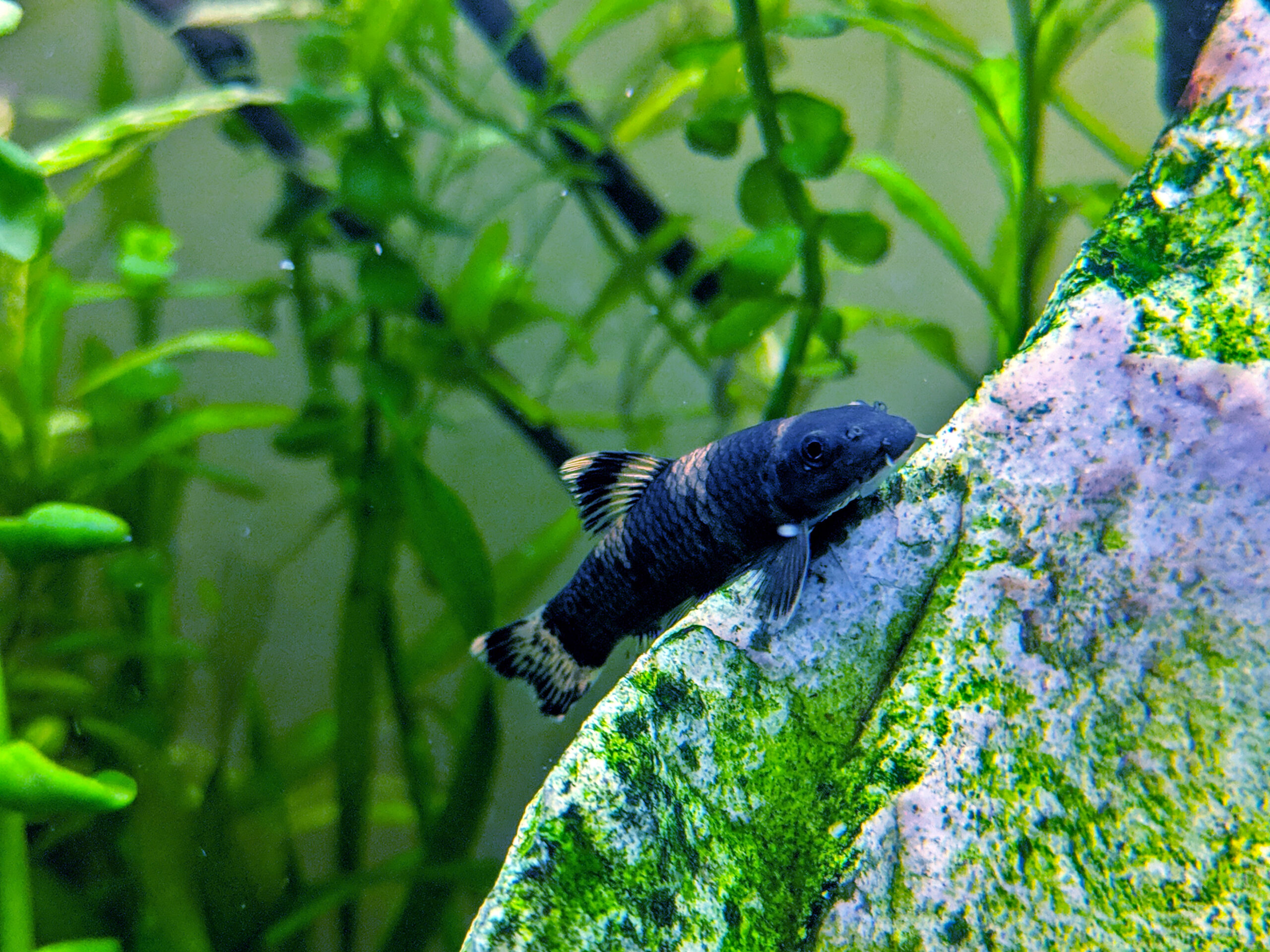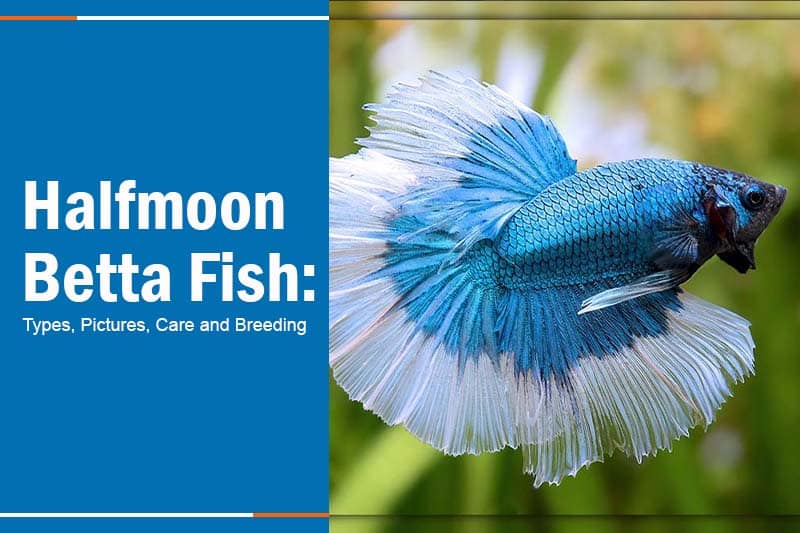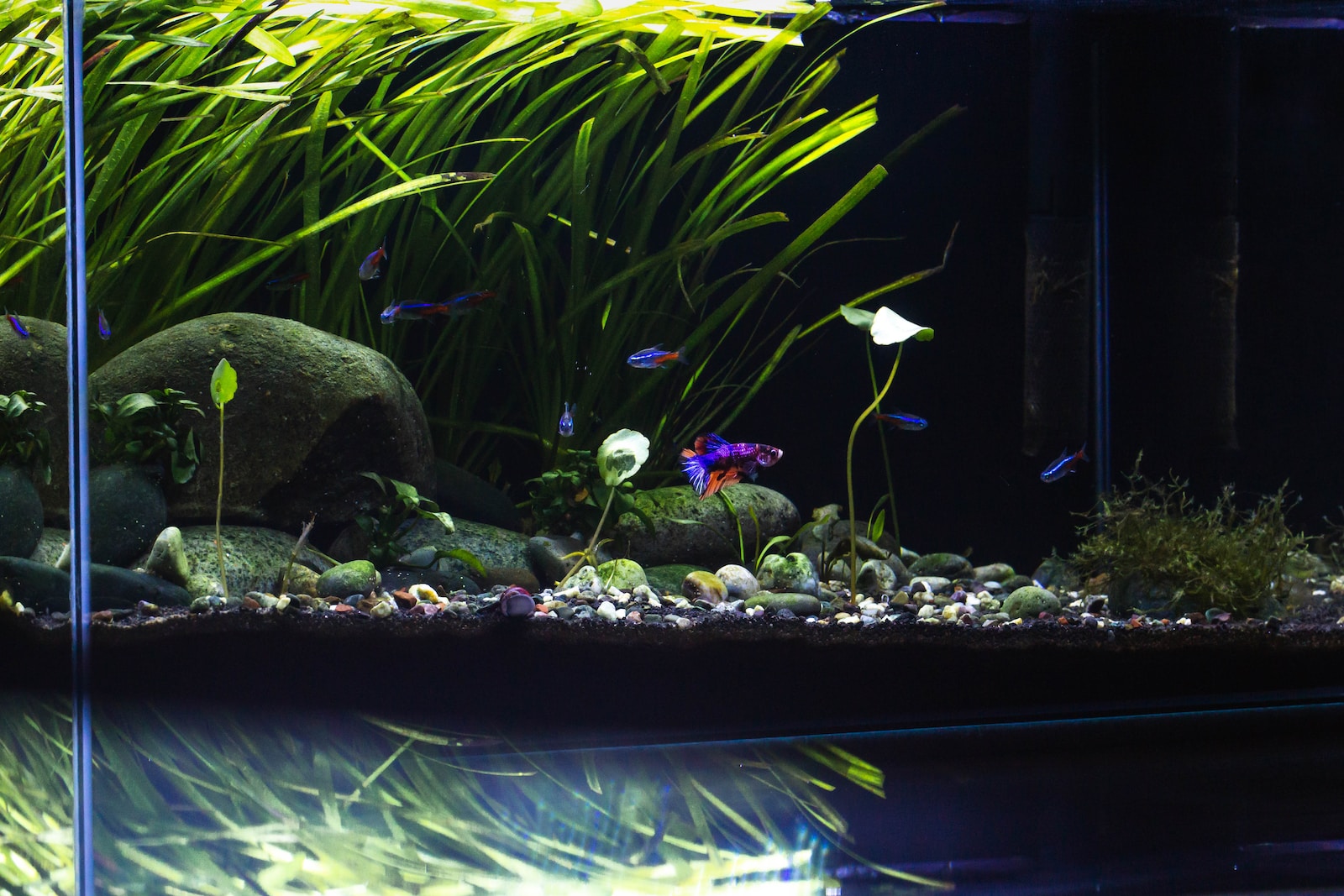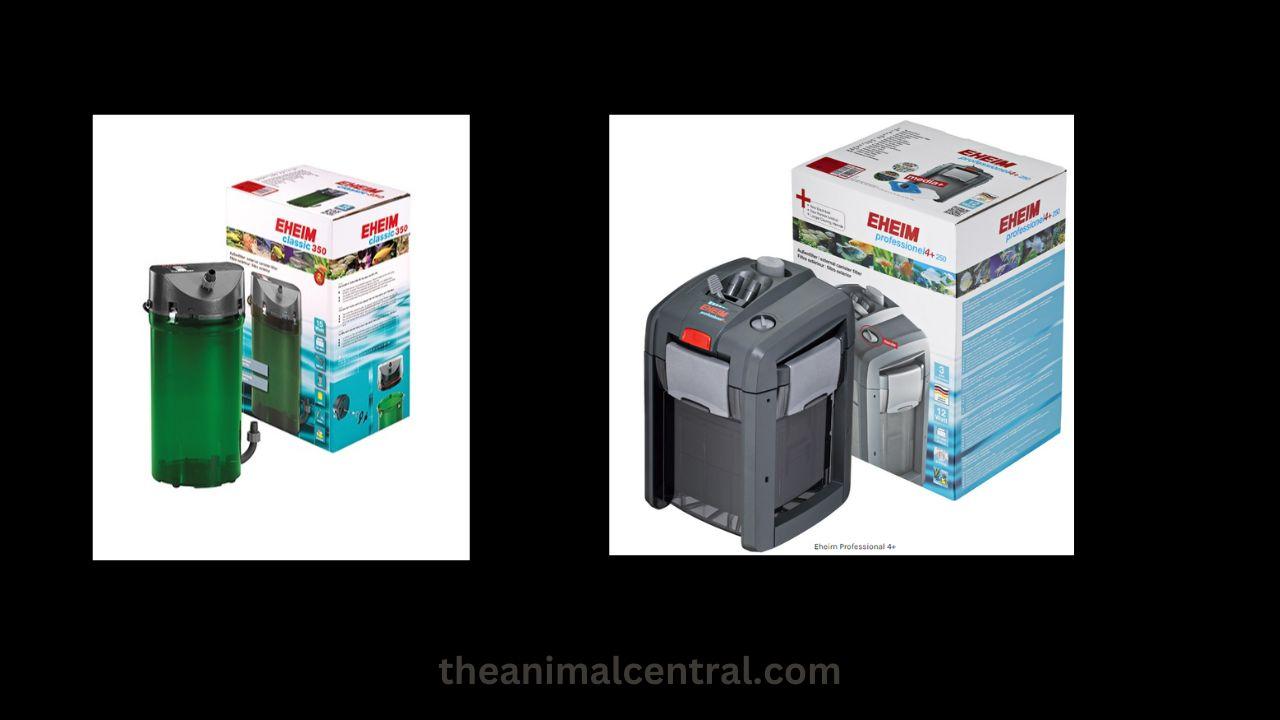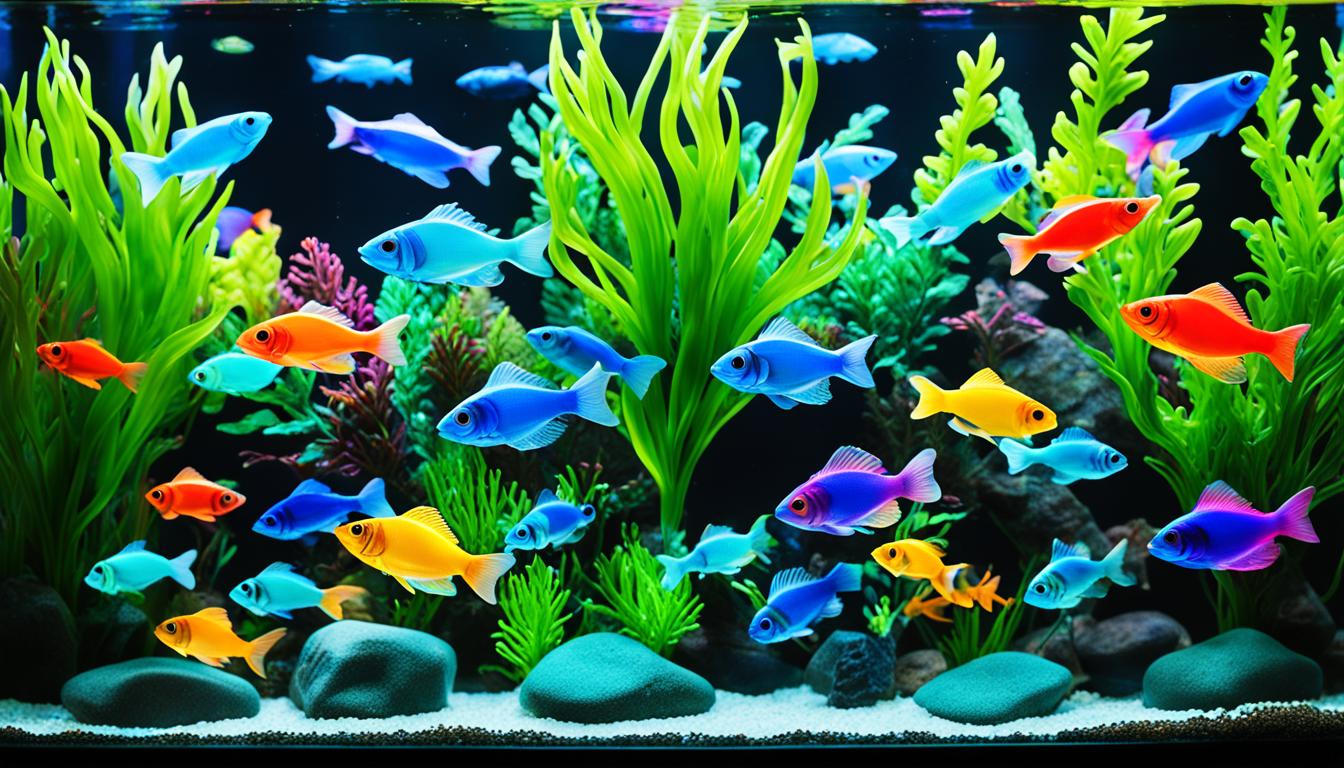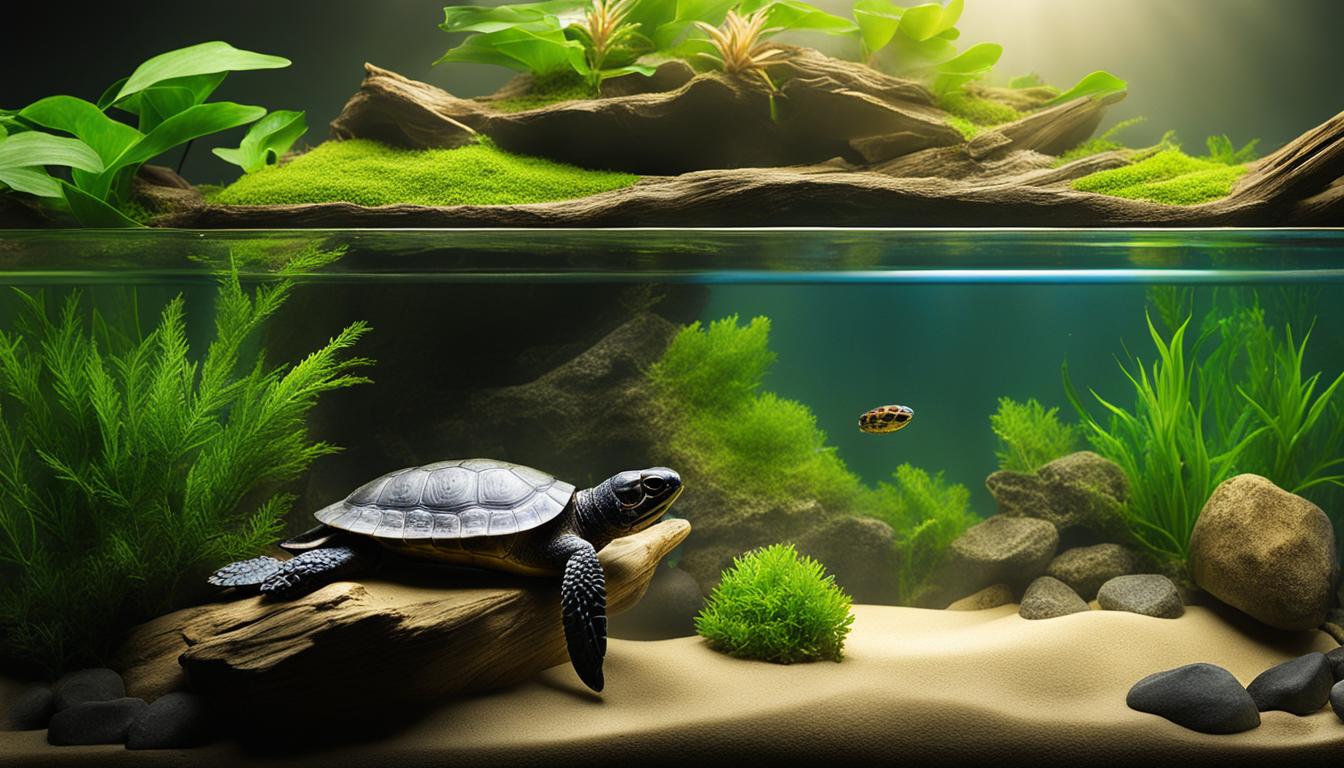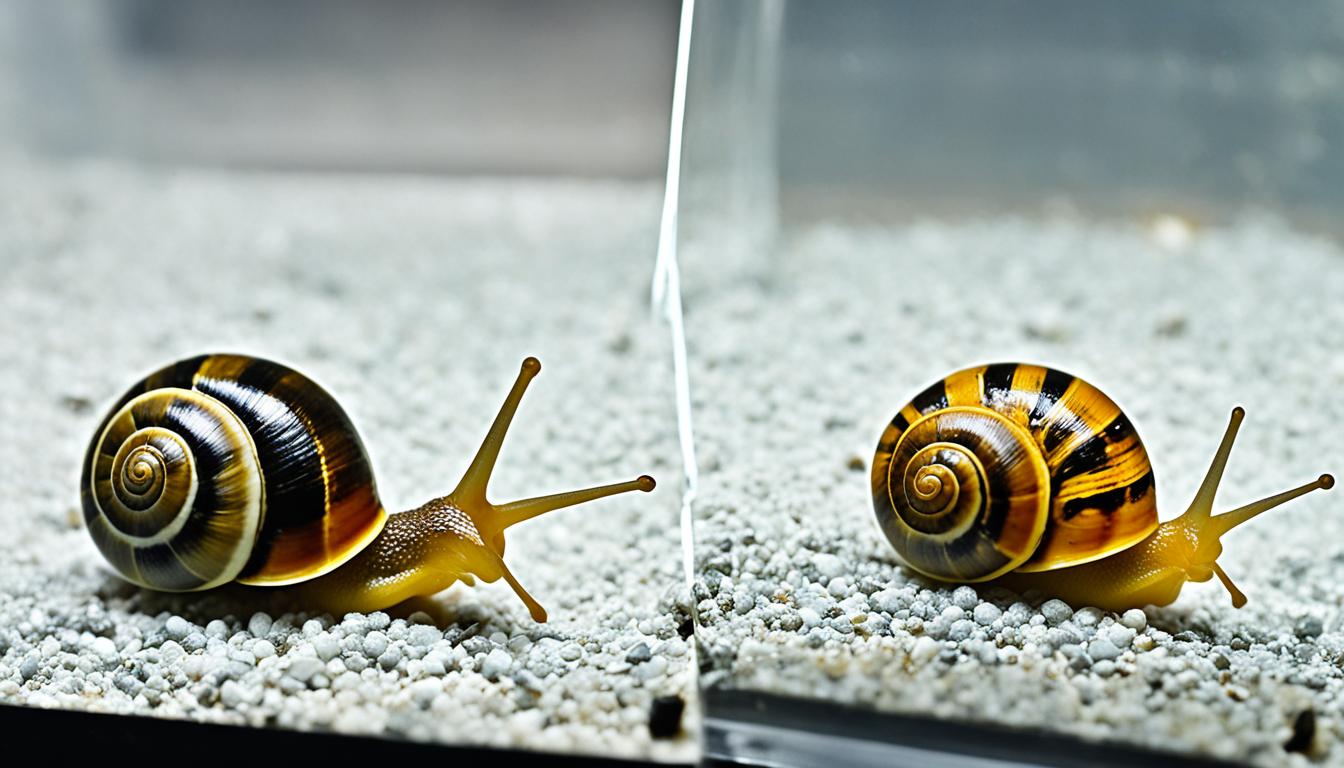Did you know panda garras can live up to 6 years in a tank? This fact shows how long these small fish can live. Caring for them is easy, making them great for both new and seasoned fish keepers.
Panda garras come from Myanmar and are known for eating algae. They grow to 2.5-4 inches long, fitting well in planted tanks or Southeast Asian setups. Their unique look and calm nature make them beloved by many.
In this guide, I’ll share tips on caring for panda garras. We’ll cover tank setup, diet, behavior, and breeding. This article will help you keep your fish happy and healthy, whether you’re starting or improving your care routine.
Table of Contents
Key Takeaways
- Panda garras are small freshwater fish native to Myanmar
- They have a lifespan of 4-6 years in captivity
- Panda garras are excellent algae eaters and active swimmers
- They thrive in planted aquariums and Southeast Asian biotope setups
- Proper care includes suitable tank size, water parameters, and diet
- This guide covers all aspects of panda garra care for successful keeping
Introduction to Panda Garra Species
I’m excited to introduce you to the fascinating world of panda garra. These charming bottom feeders have become popular in aquariums. They were first introduced in 2005. Let’s explore this interesting fish.
Species Overview and Classification
Panda garra, also known as Garra flavatra, belongs to the Cyprinidae family. It’s one of over 100 recognized species in the Garra genus. What makes G. flavatra unique is its distinctive appearance. It has alternating dark and light vertical bars on its flanks and red markings in the fins.
Natural Habitat and Distribution
These fish are native to the Rakhine Yoma mountains in western Myanmar. They live in shallow, fast-flowing waters. It’s important for aquarium keepers to replicate this habitat for their care.
Physical Characteristics and Lifespan
Panda garra are small but striking fish. They grow to 2.5-4 inches in length, with a maximum size of 3.5 inches. Their bodies are elongated with a flat underside and rounded head, perfect for their role as bottom feeders. In captivity, these hardy fish can live for 4-6 years with proper care.
| Characteristic | Detail |
|---|---|
| Size Range | 2.5-4 inches |
| Maximum Size | 3.5 inches |
| Lifespan | 4-6 years |
| Body Shape | Elongated with flat underside |
| Unique Feature | Modified lower lip forming disc-like adhesive appendage |
Panda Garra Care: Essential Requirements
Keeping panda garra fish in a freshwater tank is a rewarding hobby. These fish need specific conditions to be happy and healthy. Let’s explore the key things to ensure your panda garras thrive.
First, think about the tank size. A 20-gallon tank is a good start for a small group. For more fish, aim for a 30-gallon tank. They love to swim and explore, so more space is better.
Water quality is vital for panda garra care. Keep the water temperature between 72-82°F and the pH level between 6.5-7.5. The KH should be 6-10 dKH, and GH can range from 2-12 dGH. Regular water tests and maintenance are essential to keep these levels stable.
- Strong water flow and filtration
- Well-oxygenated water
- Rocky decorations
- Hardy plants
Panda garras prefer a habitat that looks like their natural home. Adding rocks and hardy plants provides hiding spots and encourages natural behavior. They love to eat algae, so surfaces for biofilm growth are great.
For social structure, keep 4-6 panda garras together in a large tank. This lets them form a social hierarchy and show their natural behaviors.
| Requirement | Specification |
|---|---|
| Tank Size | 20-30+ gallons |
| Temperature | 72-82°F |
| pH | 6.5-7.5 |
| Group Size | 4-6 individuals |
By following these essential requirements, you’ll create a perfect home for your panda garras. Remember, consistent care and attention to detail are key to successful panda garra care in your freshwater aquarium.
Tank Setup and Environment
Creating the perfect home for your Panda Garra is key to their happiness. I’ll show you the must-haves for a tank setup to help your fish thrive.
Minimum Tank Size Requirements
A 20-gallon tank is the minimum for a happy Panda Garra. For a group, go for a 30-gallon or bigger tank. Each fish needs about 5 gallons to swim well.
Water Flow and Filtration Needs
Panda Garras prefer fast-moving water. Use a strong filter or powerheads to match their natural habitat. Clean, oxygen-rich water is essential for these active swimmers.
Substrate Selection and Decoration
Choose smooth gravel or sand for the substrate. Add rocks and driftwood for hiding spots and algae. These decorations are not just for looks but also feed your aquarium cleaning crew.
Lighting Requirements
Medium lighting is best for Panda Garras. It helps algae grow, which they love to eat. Live plants like Anubias also thrive in similar light and offer more food.
A well-set tank mimics the Panda Garra’s natural home, keeping them healthy and active. With the right setup, you’ll enjoy watching these fascinating fish for years.
Water Parameters and Maintenance
Keeping the water right is key for panda garra care. These fish need specific conditions to thrive. Let’s explore how to make their aquatic home perfect.
The best temperature for panda garra is 72-82°F (22-27°C). Use a good aquarium heater to keep the temperature steady. For pH, aim for 6.5-7.5 to keep them healthy.
Water hardness is also vital. Keep the carbonate hardness (KH) at 6-10 dKH and general hardness (GH) at 2-12 dGH. These levels help maintain the best water chemistry for your panda garra.
| Parameter | Recommended Range |
|---|---|
| Temperature | 72-82°F (22-27°C) |
| pH | 6.5-7.5 |
| KH | 6-10 dKH |
| GH | 2-12 dGH |
Regular water changes are a must for panda garra care. I change about 20-25% of the water weekly to keep nitrates low. Panda garras are sensitive to changes, so consistency is important.
By following these tips, you’ll create a great home for your panda garra and other fish. With the right care, they can live up to 4-6 years, adding joy to your aquarium.
Dietary Requirements and Feeding Schedule
Knowing what to feed panda garras is key to their health in a tank. I’ve learned that feeding them like they do in the wild makes them vibrant and healthy.
Natural Diet in the Wild
Panda garras mainly eat algae in the wild. They graze on biofilm and algae on rocks. They also eat small invertebrates.
Recommended Foods in Captivity
To match their wild diet, I give my panda garras:
- Algae wafers
- Sinking pellets
- Blanched vegetables (zucchini, cucumber, spinach)
- Occasional live or frozen foods (bloodworms, brine shrimp)
My panda garras love Hikari Sinking Wafers. They quickly know they’re food and eat them eagerly. It’s fun to see them eat at the tank’s bottom, just like in nature.
Feeding Frequency and Portions
I feed them small amounts daily, or sometimes twice a day. It’s vital not to overfeed, as they graze all the time. I take out any leftover food after 10 minutes to keep the water clean. In winter, when it’s darker, I add more algae wafers to make sure they eat enough.
| Food Type | Frequency | Portion Size |
|---|---|---|
| Algae wafers | Daily | Small piece per fish |
| Sinking pellets | 2-3 times per week | 2-3 pellets per fish |
| Blanched vegetables | 1-2 times per week | Small slice per group |
| Live/frozen foods | Once a week | Pinch per group |
Behavior and Social Characteristics
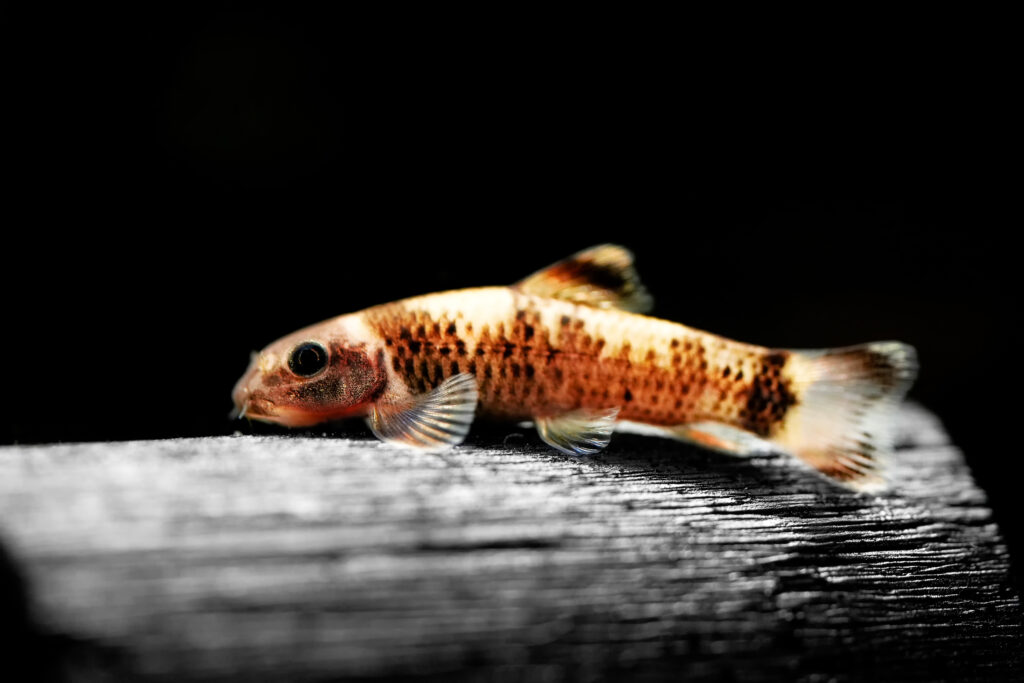
Panda garra behavior is fascinating in a community tank. These active fish love to explore and play in water currents. They’re very curious, often checking out new things in their habitat.
Natural Behaviors
In their natural home, panda garras live in waters with lots of oxygen, up to 1 meter deep. This is similar to their behavior in tanks. They swim well and can jump, so a secure lid is important.
Social Hierarchy
Panda garras do best in groups of at least 5. They show who’s boss by flaring fins and charging. But, they’re mostly peaceful and enjoy being around others.
| Behavior Aspect | Description |
|---|---|
| Group Size | Minimum 5, ideally 10+ |
| Temperament | Peaceful, sociable |
| Activity Level | High, enjoys currents |
| Hierarchy Display | Fin flaring, charging |
Signs of Stress and Health Issues
Watching panda garra behavior is important for their health. Stress signs include a paler body color. If I see this or odd behavior, I check the water right away. Good care and a nice home help them get along well in a tank.
Compatible Panda Garra Tankmates
Setting up a community tank with Panda Garras requires choosing the right fish. These peaceful bottom-dwellers get along with many species. But, there are important factors to consider for the best community tank.
Panda Garras do well in groups of 4-6 or more. This social behavior reduces aggression and creates a natural environment. When picking tank mates, look for fish that like similar water conditions:
- Temperature: 72-82°F (22-28°C)
- pH: 6.5-7.5
- Water hardness: up to 15 dGH
Good friends for Panda Garras include:
- Danios
- Rasboras
- Peaceful loaches
- Some catfish species
Avoid slow-moving or long-finned fish, as they might get stressed by Panda Garras. Add visual barriers in your tank for hiding spots and to prevent fights. With the right tank setup and tank mates, Panda Garras can be great additions to a lively community aquarium.
Breeding and Reproduction
Garra breeding, like for Panda Garras, is tough in captivity. Knowing their natural breeding cycle is essential for caring for them. These fish usually spawn from May to July, during the rainy season.
Gender Differences
It’s important to tell male from female Panda Garras for breeding. Males grow small bumps called tubercles on their heads when it’s time to breed. They also show a reddish tint in their tails. Females, on the other hand, get plumper when they’re ready to breed.
Breeding Conditions
To help them breed, I try to mimic their natural habitat. This means:
- A well-oxygenated tank with a pH around 7.0
- Low Total Dissolved Solids (TDS)
- Temperature between 22-27°C (72-81°F)
Fry Care and Development
After successful breeding, eggs hatch in 24-30 hours. The fry feed on their yolk sacs for 72 hours. Then, I start feeding them Artemia nauplii. Fertile eggs are clear and about 1.5-1.8 mm big. With good care, these fish can live up to 5 years and grow to 70-90 mm long.
Common Health Issues and Treatment
Keeping panda garra healthy in freshwater aquariums is important. I’ll share tips on preventing diseases, common health issues, and treatments. This will help your panda garra stay healthy.
Disease Prevention
Keeping water quality high is key to preventing diseases. Regular water tests and partial changes are essential. Aim for a pH of 6.5-7.5 and temperatures of 22-28°C.
Good filtration and circulation are also important. These help these oxygen-loving fish stay healthy.
Common Ailments
Panda garra can face several health issues. Some common problems include:
- Ich (white spot disease)
- Fin rot
- Parasitic infections
- Bacterial infections
Treatment Options
If you notice illness in your panda garra, act fast. Quarantine sick fish to stop the spread. For mild cases, use aquarium salt or API General Cure.
For severe infections, antibiotics might be needed. Always follow the dosage instructions carefully.
| Ailment | Symptoms | Treatment |
|---|---|---|
| Ich | White spots on body, flashing | Raise temperature, use ich medication |
| Fin Rot | Frayed, discolored fins | Antibiotics, improve water quality |
| Parasites | Weight loss, stringy feces | Anti-parasitic medication |
Prevention is better than cure. Regular maintenance, a balanced diet, and stress reduction are key. If problems continue, seek advice from a fish vet.
Tips for Successful Long-term Care
Successful panda garra care needs focus and regular effort. These fish, introduced in 2015, thrive in a clean environment. A 20-gallon tank with strong water flow is ideal, mimicking their natural habitat in Myanmar’s Rakhine Yoma mountains.
Panda garras are great at controlling algae. They eat biofilm and algae, keeping your tank clean. But, a balanced cleaning routine is essential.
Keep their water just right: 72-81°F, pH 6.0-7.5, and hardness 2-12 dKH. Regular water tests and changes are vital for their health. With proper care, they can live up to 5 years.
Feed them a mix of algae, flakes, pellets, and frozen foods. This diet supports their growth to 3.5 inches.
Make their environment comfortable with hiding spots and open swimming areas. Panda garras are active and playful. Give them space to explore. Keeping them in small groups encourages natural behavior.
| Care Aspect | Recommendation |
|---|---|
| Tank Size | 20 gallons minimum |
| Water Temperature | 72-81°F (22-27°C) |
| pH Level | 6.0-7.5 |
| Water Hardness | 2-12 dKH |
| Diet | Omnivorous (algae, flakes, pellets) |
Panda garras are peaceful and get along with other fish. They do well with species like neon tetras, guppies, and pygmy corydoras. Follow these tips for a thriving aquarium with happy, healthy panda garras.
Conclusion
I’ve looked into panda garra care, a unique freshwater fish. They are both stunning and useful. To keep them happy, a 30-gallon tank is best. The water should be between 6.5 to 7.5 pH and 72°F to 78°F (22°C to 26°C).
Panda garras like to be with others. So, it’s good to have at least five in the tank. They eat sinking algae wafers, spirulina flakes, and fresh veggies like zucchini. Adding tetras and rasboras can make the tank lively.
Keeping the tank clean is important for their health. I’ve found that changing the water often and checking the water quality is key. Watching for signs of stress helps keep your panda garras active and healthy.
FAQ
What is the ideal tank size for Panda Garra?
What should I feed my Panda Garra?
What are the ideal water parameters for Panda Garra?
Are Panda Garra good community fish?
How can I create a suitable environment for Panda Garra?
How often should I feed my Panda Garra?
Can Panda Garra be bred in captivity?
How can I prevent diseases in my Panda Garra?
Do Panda Garra need a specific type of filtration?
Are Panda Garra good algae eaters?
Are Panda Garra Aggressive?
What Is the Lifespan of a Panda Garra?
How to Differentiate Male and Female Panda Garra?
Panda Garra vs. Otocinclus: What’s the Difference?
What Is the Ideal Temperature for Panda Garra?
What Are the Ideal Water Parameters for Panda Garra?
Can Panda Garra Live with Betta Fish?
What Do Panda Garra Eat?
References
Freshwater Fish Specialist Group (FFSG): A joint initiative by the IUCN Species Survival Commission and Wetlands International, focusing on the conservation and sustainable use of freshwater fishes and their habitats.
Ornamental Aquatic Trade Association (OATA): Represents the ornamental aquatic industry in the UK, promoting high standards and responsible fishkeeping practices.
Association of Zoos & Aquariums (AZA): An international organization dedicated to the advancement of zoos and aquariums, ensuring the highest standards in animal care and welfare.
International Union for Conservation of Nature (IUCN): A global authority on the status of the natural world and the measures needed to safeguard it.
WorldFish: An international organization working to transform aquatic food systems through science and innovation, focusing on sustainable aquaculture and fisheries.
I am a passionate aquarist with over 30 years of hands-on experience in fishkeeping. My journey began at a young age, collecting fish from the wild and learning through experimentation. Specializing in tropical fish, I bring a deep understanding of the hobby to FishKeepingMadeSimple. The site provides honest, detailed reviews of essential products and accessories to help fellow enthusiasts create the best environments for their fish.

